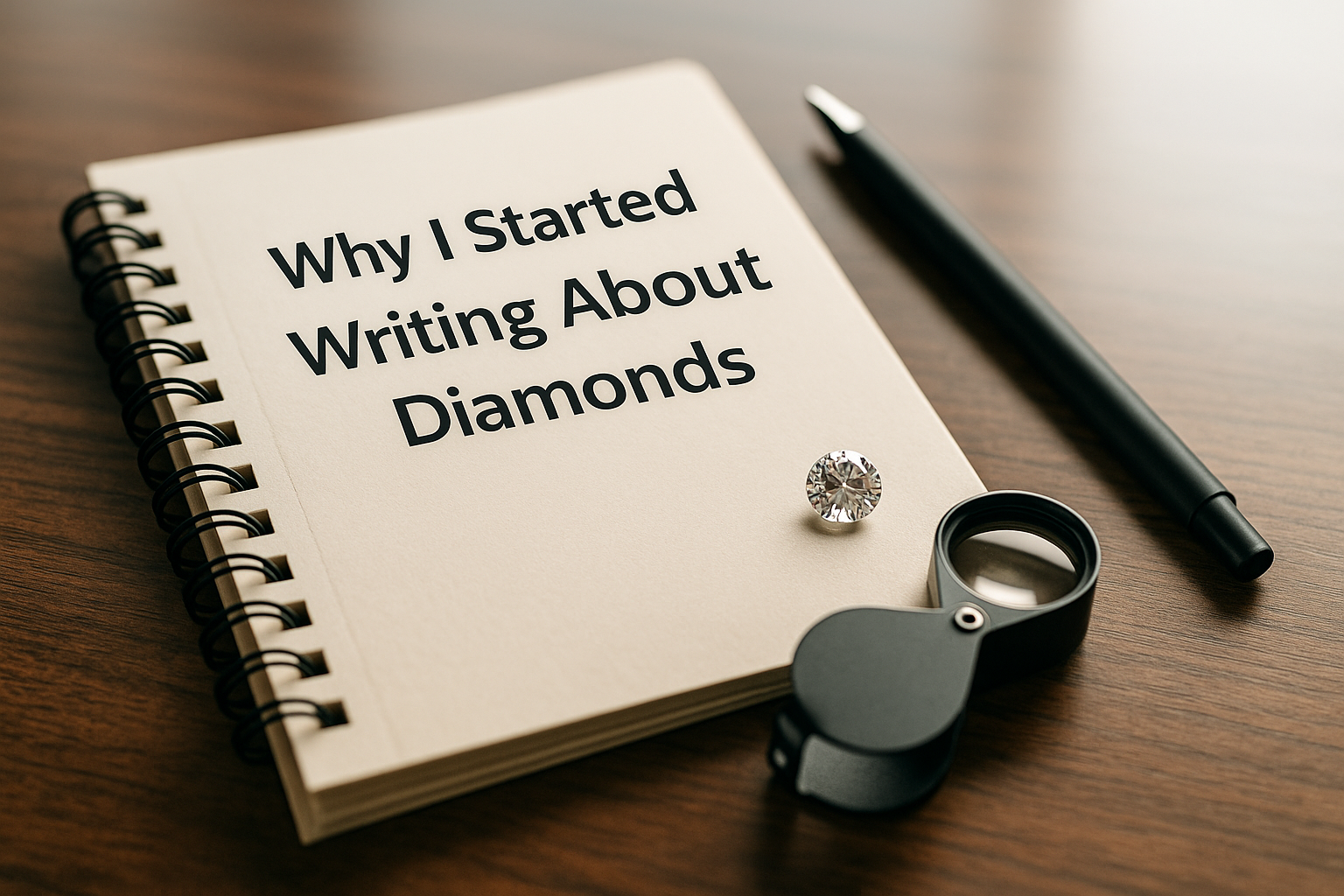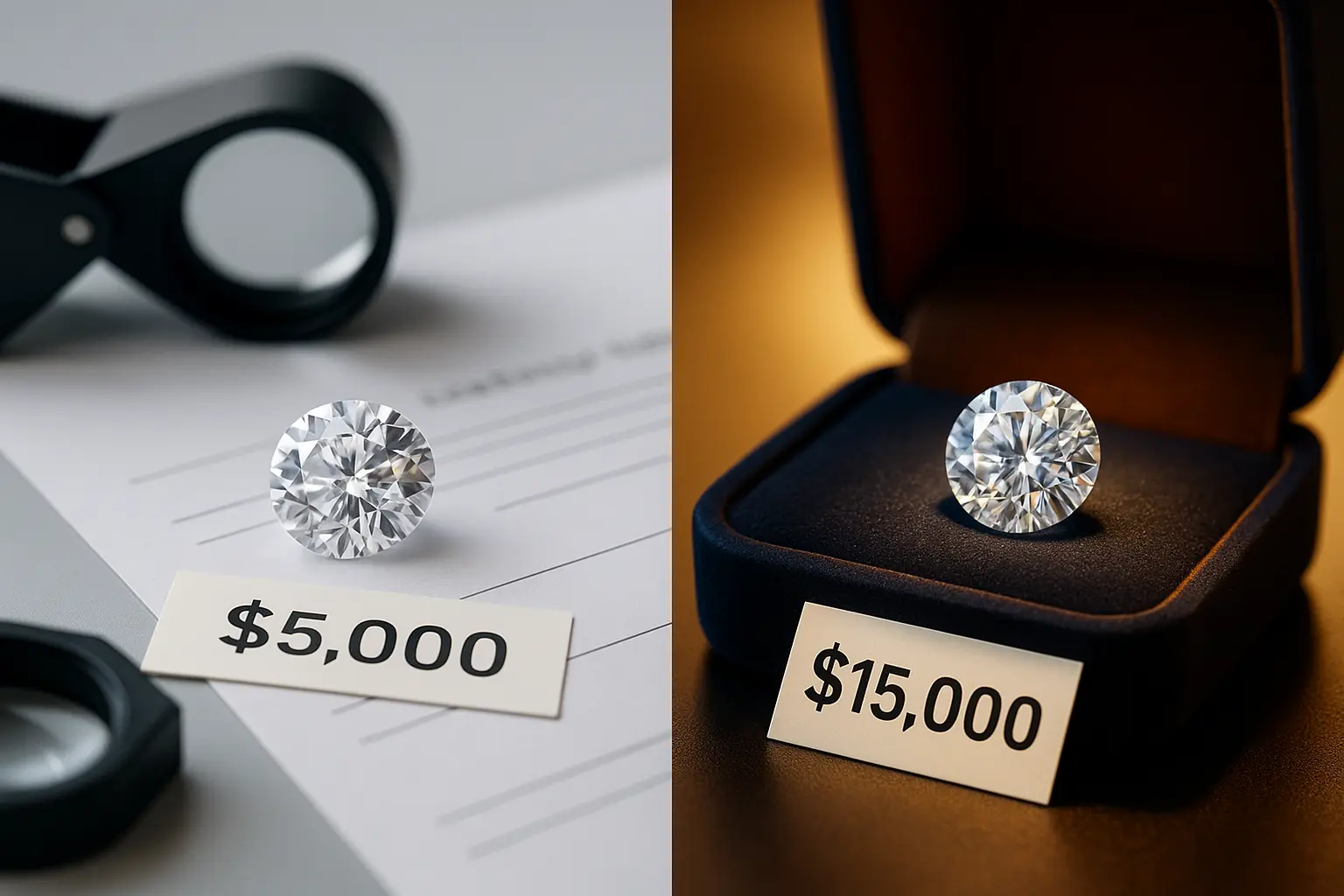Many customers have been asking us the same question lately —
We’ve seen offers for 3 carat diamond earrings for under $800.
It sounds too good to be true – so is it a scam? How to tell if a diamond is real?
The short answer? Not necessarily.
But you do need to know what to look for, what to avoid, and how to verify you’re getting a real diamond from a trusted source.
The 3 Types of Diamonds:
- Natural Diamond – Formed deep within the earth over millions of years and mined from nature.
- Lab-Grown Diamond – A real diamond created in a lab with identical physical and chemical properties.
- Moissanite – Not a diamond. Often marketed in a misleading way, so stay alert.
How to tell if a diamond is real? Gemological certificate!
A gemological certificate is like an ID card for the diamond or jewelry. It clearly shows whether the stone is natural, lab-grown, moissanite, or something else — giving you confidence and clarity. It’s issued by an external, independent, and certified lab.
There are three main types of certificates:
- GIA – The most respected certificate, applies only to the diamond (not the entire piece).
- IGI – A reliable and popular certificate that applies to the entire jewelry piece, including the diamond.
- Other certificates – Some are okay, but many are unreliable.
In general, we recommend GIA for loose diamonds and IGI for finished jewelry.
What to Check Before and After Buying the Jewelry:
Make sure it clearly states that the jewelry comes with an IGI gemological certificate.
That’s my recommendation — not mandatory, but highly encouraged.
Some suppliers produce made-to-order jewelry, so they won’t show the certificate upfront — but as long as it’s stated that the piece comes with an IGI certificate, you can feel confident in its quality.
Some buyers accept lower-tier certificates, but these can be manipulated — I’ll explain more in a future post.
To be on the safe side, make sure it says the item comes with an IGI certificate — it adds peace of mind and trust.
If the item costs more than $5,000, I would go further and request a GIA certificate for the diamond itself.
When the jewelry arrives at your home, it should include the physical certificate.
Check that the laser inscription number on the diamond matches the number on the certificate.
Then go to the official IGI website: https://www.igi.org/verify-your-report/
Enter the report number listed on the certificate to make sure it’s authentic and matches what you received.
Insurance Appraisal = Extra Peace of Mind
If a supplier includes an official insurance appraisal, that’s a great sign — it means they’re confident in their product and aren’t afraid of scrutiny by major insurance companies.
It gives you extra peace of mind before purchasing.
After the purchase, once the item arrives with the appraisal, send it to your insurance provider and ask for a quote or coverage confirmation. That’s how you know the value is real.
💡 Tip: In many cases, the return policy or warranty section will state whether the item comes with an insurance appraisal. It’s worth reading the fine print…
Buyer Protection: Marketplaces and Payment Systems Matter
Yes, you can buy from a big-name brand with confidence — but you’ll often pay 3 to 5 times more.
If you want to pay less for the exact same item, you need access to manufacturers directly from the diamond exchanges, skipping the middlemen and markup.
Buying directly from a random supplier? Risky. You don’t know who they are, if you can trust them, or what to do if something goes wrong.
The ultimate solution: buy through a marketplace. Why?
- Suppliers know they’re in a competitive environment and must offer attractive prices.
- You can read authentic reviews from real customers for each supplier, helping you know who to trust and who to avoid.
- Platforms like Etsy, Amazon, and Bidiamonds are among the best places to buy an engagement ring safely — thanks to their built-in buyer protection systems.
- They only release payment to the supplier after the return window ends, giving you time and security to respond to any issues before the seller gets paid.
Look for Trusted Payment Gateways Like Stripe or PayPal
Scammers usually can’t get approved to work with top-tier payment processors.
✅ If a store uses Stripe or PayPal, that’s a strong signal that you’re dealing with a legitimate business.
These companies offer:
- Secure checkout
- Dispute resolution
- Extra protection in case anything goes wrong
So… Why Are the Prices So Low?
Simple:
Many retailers source their diamonds from the same places — whether it’s labs or diamond exchanges.
Some resell those certified diamonds at high markups.
At Bidiamonds, you can compare offers directly from original suppliers — meaning you get the exact same certified diamond jewelry for half the price or even less.
💡 Once you know what to look for, you can enjoy amazing prices on real diamond jewelry — without taking unnecessary risks.
Now that you know how to tell if a diamond is real, you can shop smart — without falling for misleading offers.
Got a quote or an offer?
Upload it and compare live offers from verified suppliers worldwide:
👉 https://bidiamonds.com/product-detail/upload-any-ring
Frequently Asked Questions (FAQ)
❓ How can I tell if a diamond is real at home?
You can check for reflections, fog test, and scratch test — but none of these methods are fully reliable. For 100% certainty, use a gemological certificate from IGI or GIA.
❓ What’s the most accurate way to know if a diamond is real?
The most reliable method is checking a gemological certificate issued by a trusted lab like GIA or IGI. The certificate confirms if it’s natural, lab-grown, moissanite, or synthetic.
❓ Are cheap diamonds real?
Sometimes yes — for example, lab-grown diamonds can cost much less than natural ones. But be cautious: if the price seems too good to be true, check the certificate to avoid scams.
❓ Can moissanite pass as a real diamond?
To the naked eye, moissanite can look very similar, but it’s not a diamond. Certified labs clearly mark moissanite in the report, so always ask for documentation.
❓ How do I verify a diamond certificate?
Look for the laser inscription number on the diamond. Then go to the lab’s website (e.g., IGI Verify) and enter the report number to confirm it matches.


